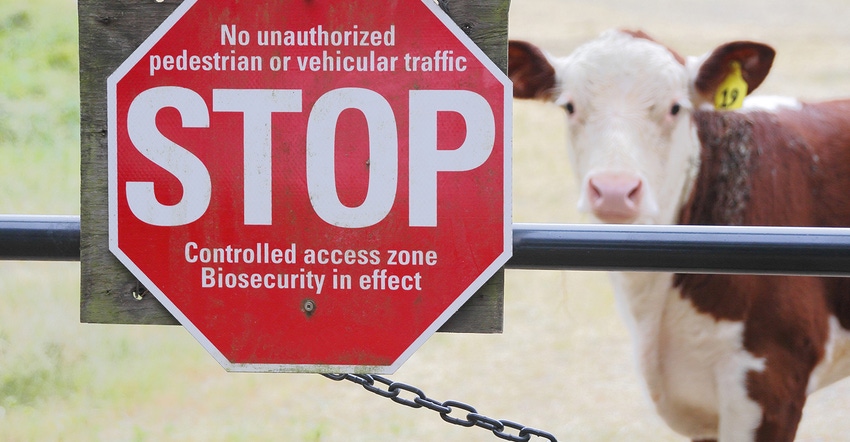
Foot-and-mouth disease, a highly contagious, viral multi-livestock species disease, was eradicated in the U.S. in 1929.
Federal and state officials want to keep it at bay, as well as be prepared to respond to any animal disease outbreak across the country and in Minnesota. To do that, USDA, several states — including Minnesota —associated agencies and state livestock groups plan to conduct an aggressive animal disease response exercise May 8-10.
This will be the first large-scale exercise of its kind, simulating what various agencies and people would do if a disease outbreak occurred in the U.S.
In Minnesota, the Board of Animal Health, the Department of Agriculture, the University of Minnesota and several livestock industry organizations will participate in the exercise. FMD was chosen because it affects so many species — cows, pigs, sheep, goats, deer and other animals with divided hooves.
On Day 1 of the FMD outbreak exercise, USDA will issue a mock alert to the participating states, announcing that FMD has been found in a state that does not border Minnesota. On Day 2, Minnesota officials will learn about a positive test result from an infected animal found in the state. And by Day 3, the mock FMD outbreak will blanket the Midwest.
“We’ve done tabletop exercises before, in a room with figurines on a tabletop,” says Beth Thompson, Minnesota Board of Animal Health executive director. “Now this [exercise] takes it to the next level. We will stay in our offices and work through as an outbreak would happen.”
Sharing mock outbreak information
That means communicating with government officials, people in state agencies and veterinarians, and down through various channels to connect with commodity groups. Information will be shared mostly via emails. As “news” of the mock outbreak is disseminated, all correspondence will be labeled in bold print that it is a drill, not an actual event in progress.
Given what Minnesota has been through dealing with various animal diseases in recent memory — bovine tuberculosis, avian influenza, chronic wasting disease, Seneca virus and porcine epidemic diarrhea virus in hogs — many folks will know what to do, especially at the farm level. For example, animal health officials would start quarantining affected farms and surrounding areas, and surveillance would be established. Animal movement restrictions in and out of state would be implemented.
Plus, commodity groups, such as dairy and pork, would practice implementing individual food supply plans that they have already written. The supply plans outline different responses, such as establishing on-farm biosecurity measures and vaccination programs.
After the three-day exercise, Thompson says all aspects of the response will be evaluated, so all participants can be better prepared for a real-life animal disease outbreak.
About the Author(s)
You May Also Like






